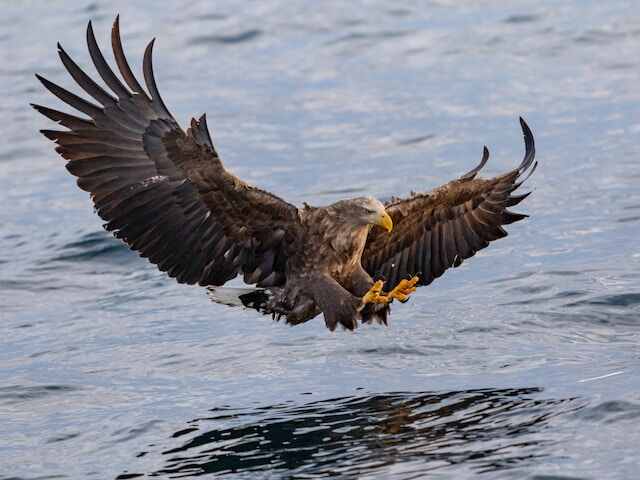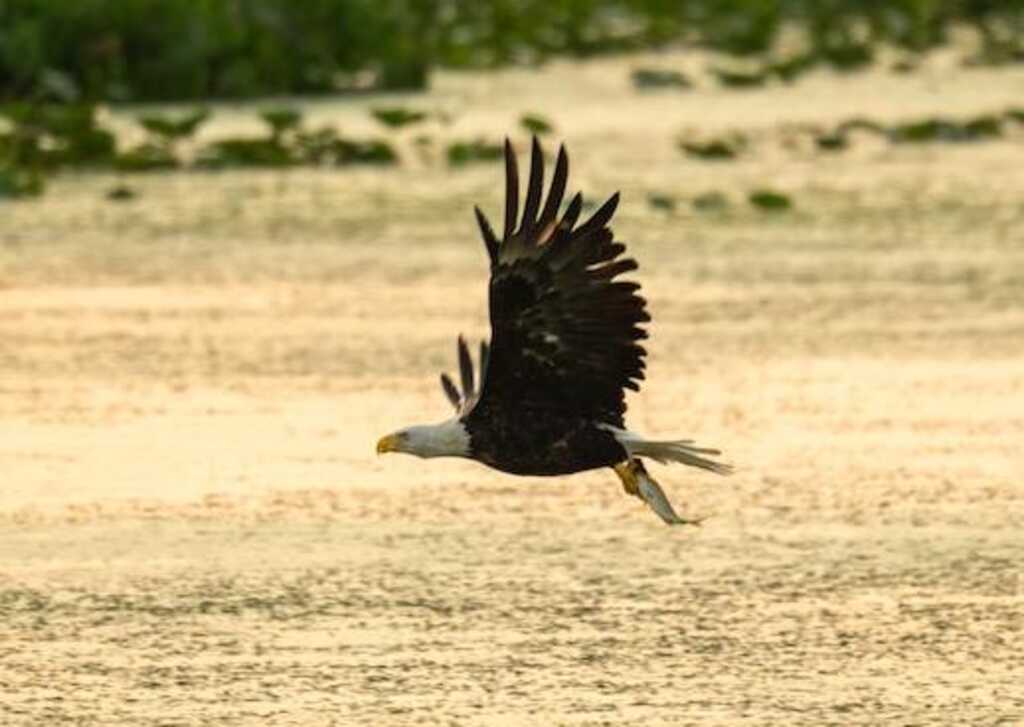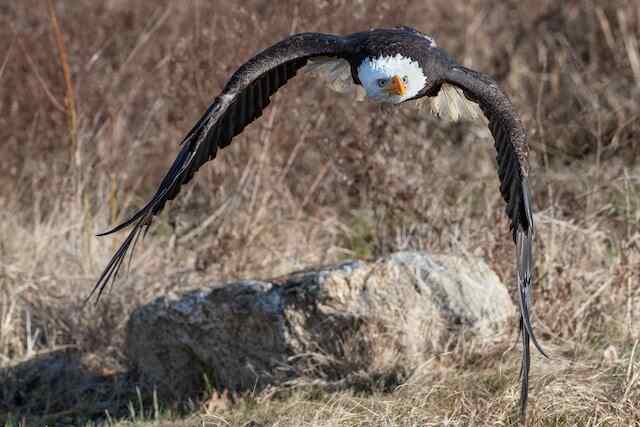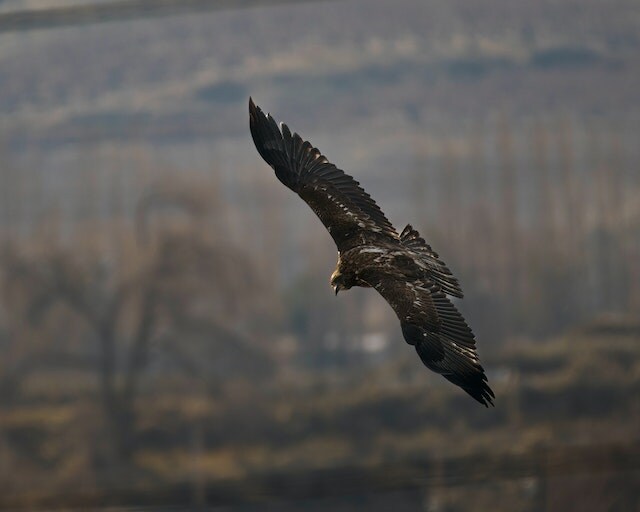In the vast expanse of the sky, eagles reign supreme as majestic symbols of power and freedom. But beyond their graceful flight and keen eyesight lies a lesser-known wonder: their incredible strength. Join us as we explore the fascinating world of eagles and uncover the secrets behind their remarkable ability to carry weight. From their impressive hunting techniques to the astonishing loads they can bear, prepare to be captivated by the extraordinary strength of these iconic birds of prey.
Table of Contents
- 1 Key Takeaways
- 2 How Much Weight Can An Eagle Carry
- 3 The Anatomy of an Eagle
- 4 Hunting and Prey
- 5 Lift and Carry Capacity
- 6 Adaptations for Carrying Heavy Loads
- 7 Examples of Impressive Eagle Feats
- 8 Limitations and Constraints
- 9 Comparison to Other Birds of Prey
- 10 Training and Use of Eagles in Human Activities
- 11 Conservation and Protection of Eagles
- 12 Fascinating Facts and Myths about Eagles’ Carrying Capacity
- 13 Frequently Asked Questions
- 13.1 Do eagles always hunt and carry prey that are heavier than themselves?
- 13.2 Are there any other birds of prey that can carry heavier loads than eagles?
- 13.3 What are some examples of impressive feats performed by eagles in terms of carrying capacity?
- 13.4 Are there any limitations or constraints that eagles face when carrying heavy loads?
- 13.5 How are eagles trained and used in human activities that require their carrying capacity?
- 14 Conclusion
- 15 Author
Key Takeaways
- Eagles have a wingspan that can reach up to seven feet, allowing for ample lift and maneuverability.
- Eagles can lift prey items that may exceed their own body weight by up to 50%.
- Eagles possess strong and robust bones in their wings and legs, providing support and stability for carrying heavy loads.
- The size and strength of the eagle, as well as the type of prey being carried, can affect carrying capacity.

How Much Weight Can An Eagle Carry
An eagle’s carrying capacity varies depending on its species and size. Generally, eagles can lift prey that is 50% to 66% of their body weight. Larger eagles like the Bald Eagle can carry up to 4–5 pounds (1.8-2.3 kg).
However, some eagles have been observed carrying heavier loads for short distances in extraordinary circumstances.
Their powerful talons and sturdy build enable them to capture and transport prey efficiently, making them formidable hunters in the avian world.
The Anatomy of an Eagle
The intricate structure of an eagle’s anatomy enables it to efficiently navigate through the air, captivating observers with its graceful movements and awe-inspiring strength.
With a wingspan that can reach up to seven feet, the eagle possesses long, broad wings that provide ample surface area for lift and maneuverability.
Its powerful chest muscles, attached to a sturdy keel bone, generate the force necessary for sustained flight.
The eagle’s sharp, curved beak allows it to tear through flesh, while its talons, equipped with strong, sharp claws, are perfect for gripping and carrying prey.
However, despite its impressive physical attributes, an eagle does have some limitations.
Due to its large size, the eagle is unable to carry prey that exceeds its own weight, although it is capable of lifting prey up to four times its own body weight.
Transitioning to the subsequent section on hunting and prey, the eagle’s anatomy plays a crucial role in its ability to capture and carry its food.
Hunting and Prey
In terms of hunting and prey, it is noteworthy that eagles are capable of lifting and transporting prey items that may exceed their own body weight by up to 50%.
These birds of prey employ various hunting strategies, depending on their habitat and available prey. They use their keen eyesight to spot potential targets from high altitudes, often soaring in large circles.
Once a target is spotted, eagles will dive at great speeds to capture their prey with their sharp talons. They have been observed hunting small mammals, fish, birds, and even reptiles.
The hunting activities of eagles play a crucial role in maintaining a balanced ecosystem by controlling populations of their prey species.
This impacts the abundance and distribution of other organisms within the ecosystem.
Transitioning to the subsequent section about ‘lift and carry capacity,’ eagles’ hunting prowess is closely linked to their ability to lift and carry prey items efficiently.
Lift and Carry Capacity
With remarkable strength and precision, the majestic eagles showcase their extraordinary ability to transport prey items that surpass their own body mass by up to 50%, eliciting awe and admiration from observers.
To further understand the eagles’ lift and carry capacity, it is essential to explore the adaptations for heavy loads and the variations in carrying capacity among different eagle species.
These adaptations include powerful flight muscles that enable them to generate the necessary lift and carry force, sturdy skeletal structures that provide stability during flight, and specialized talons that securely grip the prey.
Additionally, variations in carrying capacity can be attributed to factors such as the size and strength of the eagle, as well as the type of prey being carried.
Understanding these adaptations and variations provides valuable insights into the remarkable abilities of eagles to carry heavy loads.
Moving forward, we will delve into the specific adaptations for carrying heavy loads.

Adaptations for Carrying Heavy Loads
Adaptations for carrying heavy loads can be observed in the remarkable musculoskeletal structure of eagles, facilitating their ability to transport prey items that exceed their own body mass.
Eagles possess strong and robust bones, particularly in their wings and legs, which provide the necessary support and stability required for carrying heavy loads.
Their wings are designed with powerful flight muscles, allowing them to generate the required lift and thrust.
Additionally, eagles have sharp and curved talons that enable them to grasp and secure their prey effectively.
These adaptations for heavy loads are further complemented by the presence of a strong beak, which aids in tearing and manipulating prey items during transport.
By employing various carrying strategies, such as gripping prey with their talons or balancing it on their back, eagles are able to successfully transport prey items that are larger than their own body size.
This impressive ability will be further explored in the subsequent section about examples of impressive eagle feats.
Examples of Impressive Eagle Feats
This subtopic will discuss two impressive feats performed by eagles: carrying large fish or animals and carrying objects for nest construction.
Eagles are known for their strength and agility, which allows them to catch and carry prey that can be significantly larger than themselves.
Additionally, eagles are skilled at gathering and transporting materials such as sticks and branches to build and maintain their nests.
These behaviors demonstrate the remarkable physical capabilities and resourcefulness of these birds.
Carrying large fish or animals
Carrying large fish or animals, the immense strength of an eagle allows it to haul prey that can weigh up to four times its own body weight, leaving spectators in awe of its remarkable capabilities.
Eagles have developed various fishing techniques to capture their prey, including swooping down from great heights and diving into the water with their talons extended.
Once they have successfully caught their prey, the eagle uses its powerful wings and sharp talons to lift and carry the heavy load back to its nest or feeding site.
This ability to carry such heavy loads is attributed to the eagle’s muscular physique and strong skeletal structure.
In the subsequent section about carrying objects for nest construction, we will explore how eagles utilize their strength and precision to build sturdy and secure nests.
Carrying objects for nest construction
Utilizing their exceptional strength and precision, eagles exhibit their remarkable engineering skills by deftly transporting a diverse range of materials to construct their sturdy and secure nests.
The strength of an eagle’s beak allows it to carry various types of objects, including branches, twigs, grass, and moss, which serve as the building blocks for their nests.
These materials are carefully selected and arranged to create a solid structure that can withstand the elements and provide a safe haven for their young.
With their powerful beaks, eagles can firmly grasp and carry objects that are several times their own weight, showcasing their extraordinary physical capabilities.
This ability to carry and manipulate nest building materials demonstrates the impressive strength and dexterity of these magnificent birds.
Moving forward to the subsequent section about ‘limitations and constraints’, it is important to recognize the constraints that eagles face in their nest construction endeavors.

Limitations and Constraints
Limitations and constraints play a crucial role in determining the maximum weight an eagle can carry. These constraints are influenced by various factors such as the eagle’s physical capabilities and the environment in which it operates.
Eagles have powerful muscles and strong talons that enable them to carry prey, but their carrying capacity is not unlimited.
One of the main limitations is the eagle’s own body weight, as they need to be able to fly with their prey.
Additionally, the size and strength of the eagle’s talons determine the maximum weight it can grip and carry.
The type of terrain and weather conditions also impose constraints on an eagle’s carrying capacity. For instance, strong winds can make it difficult for an eagle to maintain control over its prey.
Understanding these limitations and constraints is essential for comprehending an eagle’s capabilities in carrying objects.
Transitioning into the subsequent section about ‘comparison to other birds of prey’, it is interesting to examine how these limitations differ among various species.
Comparison to Other Birds of Prey
This discussion will explore variations in carrying capacity among different species of birds of prey and the unique adaptations of other birds of prey.
The carrying capacity refers to the maximum weight an individual bird can carry while flying.
Different species of birds of prey have evolved varying carrying capacities based on their body size, wing shape, and muscle strength.
Additionally, other birds of prey possess unique adaptations such as specialized talons or beaks that enable them to capture and carry specific types of prey efficiently.
Variations in carrying capacity among different species
Notably, the carrying capacity of eagles varies significantly across different species, with the Harpy Eagle (Harpia harpyja) holding the record for the highest carrying capacity, capable of carrying prey that can weigh up to 17 pounds (7.7 kilograms).
The variations in carrying capacity among different species can be attributed to several factors. First, the size and strength of the eagle’s wings and talons play a crucial role in determining their carrying capacity.
Larger eagles with stronger wings and talons are generally capable of carrying heavier prey.
Second, the hunting strategies employed by different species also affect their carrying capacity.
Eagles that rely on a sit-and-wait approach, such as the Golden Eagle, tend to have a higher carrying capacity compared to those that engage in aerial pursuits.
Finally, the availability and abundance of prey in their habitat can influence an eagle’s carrying capacity.
In conclusion, understanding the variations in carrying capacity among different species of eagles helps shed light on the factors that affect their hunting capabilities.
This knowledge can further our understanding of the ecological dynamics of these magnificent birds.
Moving forward, it is important to explore the unique adaptations of other birds of prey in order to gain a comprehensive understanding of their hunting abilities.
Unique adaptations of other birds of prey
In exploring the fascinating realm of birds of prey, it is intriguing to uncover the distinctive adaptations exhibited by different species.
Falcons, for instance, possess unique adaptations that enable them to excel in aerial pursuits.
One such adaptation is their long, pointed wings that allow for rapid and agile flight, enabling them to chase down their prey with remarkable speed.
Additionally, falcons have a specialized notch in their beak, known as a ‘tooth,’ which aids in severing the spinal cord of their prey during the capture.
On the other hand, hawks employ a variety of hunting strategies, depending on their specific ecological niche.
Some hawks, like the Cooper’s hawk, are agile woodland hunters, while others, like the red-tailed hawk, rely on soaring and gliding techniques to spot and capture their prey.
These unique adaptations and hunting strategies demonstrate the remarkable diversity and adaptability of birds of prey.
Transitioning to the subsequent section about the training and use of eagles in human activities, it is important to understand the unique capabilities of these majestic creatures.

Training and Use of Eagles in Human Activities
This discussion focuses on the training and use of eagles in human activities, with a particular emphasis on their historical and cultural significance.
Trained eagles have played a prominent role in various cultures throughout history, symbolizing power, strength, and nobility.
In modern times, eagles continue to be utilized in falconry, a traditional sport that involves training birds of prey for hunting.
Additionally, eagles are increasingly being used in wildlife conservation efforts, where they are trained to assist in activities such as tracking and studying endangered species.
Historical and cultural significance of trained eagles
Trained eagles throughout history have held immense cultural significance, serving as symbols of power and authority, and their presence in various artistic depictions has transcended time, making them anachronistic icons that continue to captivate audiences.
The training techniques employed in ancient civilizations were often based on imprinting, where the eaglets were raised by humans from a young age and taught to recognize them as their parents.
This bond created a sense of trust and obedience, allowing eagles to be used in various human activities such as hunting, warfare, and religious ceremonies.
The cultural symbolism associated with trained eagles varied across different civilizations, with some considering them as divine messengers while others saw them as representations of national pride and strength.
Today, eagles are still used in modern-day falconry and wildlife conservation efforts, showcasing their adaptability and continued relevance in our society.
Modern-day uses in falconry and wildlife conservation
Utilized in the practice of falconry and wildlife conservation today, modern-day uses for trained eagles include surveying and monitoring wildlife populations, deterring nuisance birds from airports and agricultural areas, and even assisting in the retrieval of lost drones.
Falconry techniques involve training eagles to hunt and assist in controlling pest populations, such as rabbits and rodents.
Additionally, rehabilitation and release programs aim to reintroduce injured or orphaned eagles back into the wild.
These programs provide a vital opportunity for eagles to regain their strength and skills before being released to their natural habitat.
The use of trained eagles in these programs helps to ensure the successful rehabilitation and survival of these majestic birds.
Transitioning into the subsequent section about conservation and protection of eagles, it is crucial to understand the significance of these efforts in safeguarding the future of eagles worldwide.
Conservation and Protection of Eagles
Conservation and protection efforts aim to safeguard the well-being and habitat of eagles, ensuring their survival and promoting a healthy population.
These efforts involve various strategies, such as conservation programs, habitat preservation, and legal protection.
Conservation organizations work to create and maintain suitable habitats for eagles, ensuring they have access to food sources, nesting sites, and safe breeding areas.
They also collaborate with governments and communities to enact laws and regulations that protect eagles from hunting, poaching, and habitat destruction.
By monitoring eagle populations, conducting research, and implementing conservation measures, these efforts contribute to the long-term survival of eagles and the maintenance of healthy ecosystems.
Moving forward to the section about fascinating facts and myths about eagles’ carrying capacity, it is important to explore the limits of their physical abilities and examine common misconceptions.

Fascinating Facts and Myths about Eagles’ Carrying Capacity
Moving on from the discussion on conservation and protection of eagles, it is intriguing to explore the fascinating facts and myths surrounding the carrying capacity of these majestic birds.
Eagles have captivated human imagination throughout history, being revered for their strength and grace.
Famous eagle stories abound in various cultures, where these birds are often portrayed as symbols of power, freedom, and wisdom.
In Greek mythology, for example, the eagle was associated with Zeus, the king of the gods. Additionally, eagles have been depicted in Native American culture as spiritual messengers and symbols of courage.
As for their carrying capacity, eagles are known for their remarkable strength, but their actual ability to carry weight varies depending on factors such as their size, age, and species.
Examining these captivating aspects of eagles sheds light on the intricate relationship between humans and these magnificent creatures.
Frequently Asked Questions
Do eagles always hunt and carry prey that are heavier than themselves?
Eagles do not always hunt and carry prey heavier than themselves. They employ various hunting techniques, such as aerial attacks and surprise ambushes, and select prey based on factors like availability, vulnerability, and energy gain.
Are there any other birds of prey that can carry heavier loads than eagles?
Other birds of prey, such as the Andean condor and the Himalayan vulture, are known to carry heavier loads than eagles. These birds have been observed carrying prey that weigh several times their own body weight.
What are some examples of impressive feats performed by eagles in terms of carrying capacity?
Impressive aerial feats by eagles include soaring at high altitudes and performing acrobatic maneuvers. Their unique hunting techniques involve swooping down with great speed and precision to catch prey.
Are there any limitations or constraints that eagles face when carrying heavy loads?
Eagles face limitations and constraints when carrying heavy loads. These include their physical capabilities, such as wing size and muscle strength, as well as factors like air currents and prey behavior.
How are eagles trained and used in human activities that require their carrying capacity?
Eagle training methods have been developed throughout history for various human activities. These include hunting, messenger services, and even military use. The training process involves conditioning and positive reinforcement techniques to enhance their carrying capacity.

Conclusion
In conclusion, the majestic eagle possesses remarkable strength and agility, allowing it to carry impressive loads. With its powerful wings and strong talons, it can lift prey weighing up to four times its own body weight.
This incredible feat is made possible by the eagle’s anatomical adaptations, such as its robust skeletal structure and muscular system.
As a symbol of power and freedom, the eagle’s ability to carry heavy loads serves as a testament to its remarkable capabilities and survival instincts in the natural world.



